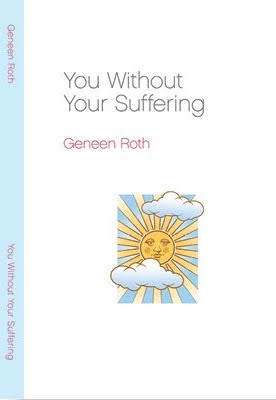A friend was visiting, she crashed into something which crashed into the bowl and then it broke. After wanting to (but deciding that was not a good idea) to blame her for being such a klutz — blame is always my first line of defense and a perfect although ultimately unhelpful way to defuse any feelings of sadness or anger — I just sort of looked at the poor bowl. The bird was left intact but everything else was shattered. Three minutes before the crash, it was whole, intact, the bowl I knew and loved. And then suddenly, it was broken. Yeah, I could glue it back together. And yeah, I could use gold-tinted glue and have one of those items that are more valuable broken than whole because now it is veined in gold. But I decided not to do that, as I seem to be on a theme these days of letting myself feel, be, have what’s imperfect including uh, my own self. This imperfect broken-and-whole life.
Another friend (not the klutz) was diagnosed with adrenal cancer last week. It seemed that she was fine one day and then the next, dying of cancer. I know that’s not how it really is or was, but it seemed that way. And one of the things I thought when I heard was “when it’s over, it’s over. Although she may have more years, may do successful treatment, that part of her life that was gliding through with health and a sense of invulnerability is over.” And it happens so suddenly. You are bumping along in your life and then the life you thought you were having changes. Gets broken. Some parts of it are left intact but other parts are shattered. For my friend with cancer, the things that concerned her before the diagnosis — the conflicts with her daughter, her son-in-law, her other daughter — fell quickly away and what was left was treatments, which doctor to see, when to start, which tests to get. Her life. Facing death.
Years ago — and forgive me if you‘ve heard this — I went to a workshop with Stephen Levine during which he held up a teacup and said, “It’s already broken.” I remember thinking, “Wow. Can’t we have a good time here? Do we always have to think about death and brokenness? How about celebrating that it’s such a pretty purple teacup and it’s not broken yet…” But Stephen was, after all, a Buddhist teacher, and impermanence/death won the day. And given that the teacup-spiel was more than twenty years ago and I’m still talking about it, I’d say the message was memorable.
Both are true: knowing that the ultimate state of anything — a bird-bowl, a person, a relationship, a house — is broken (my friend who lost his house in the fires this summer was convinced, in the moment before the fire broke out, that his house was solid, a seemingly ever-lasting structure and then, whoosh, it was gone) and appreciating the beauty of its wholeness now.
Matt and I were talking about this at breakfast this morning, as at 2:39 am, an earthquake woke us both. Fast asleep and then bang. Shaking. Rumbling, eyes open and wow, an earthquake. Time to run under the triangle of safety? (Where exactly is that again? Or was that theory debunked and is the triangle dangerous?) And then it was over but not before the reminder that you think it’s solid — the bowl, the body, the earth — and in a second, it starts to shake. Over scrambled eggs, Matt said to me, “it’s all so temporary.”
The reason this is important is not so that when a possible (albeit incredibly nice) klutz approaches your favorite bowl, you move it out of the way (although that’s not a bad idea). Or worry that every time you have an ache or a pain you are dying of cancer (although given my teeny propensity toward hypochondria, I would understand if that is where your mind goes). It’s allowing the knowledge of “ultimate brokenness” into your awareness so that when the bird-bowl does break, you’ve already adored it in its wholeness (and then, if you want, glue it together with gold glue).
It’s that with each step, each breath (or as many as you are willing to be aware of), you appreciate the indestructible spirit of life itself and the inherent fragility of every form. It’s holding them both: the life force that can never be broken — when one form dies, the life force pops up somewhere else, even between cracks in the cement — and physical forms that can. There’s appreciating what can never be broken and not being afraid to love what can, does and will break. Because there’s always the matter of the human heart, which cannot help but break and love flagrantly and extravagantly in spite of, and because of it. Lucky us.







